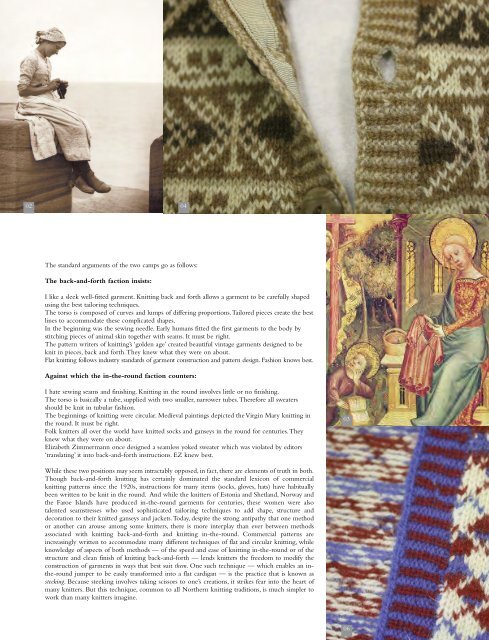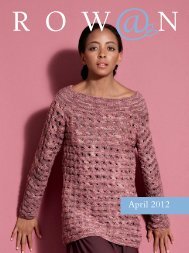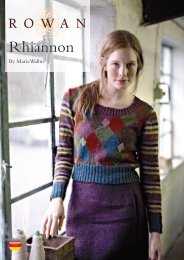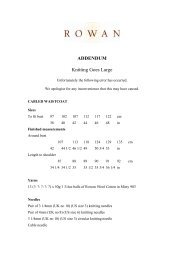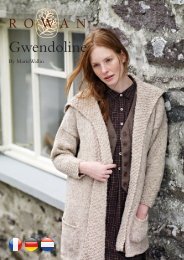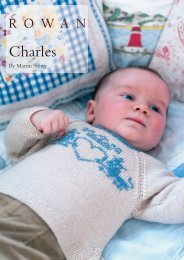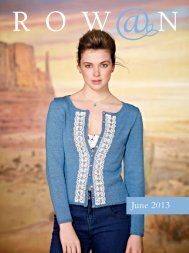You also want an ePaper? Increase the reach of your titles
YUMPU automatically turns print PDFs into web optimized ePapers that Google loves.
02 04The standard arguments of the two camps go as follows:The back-and-forth faction insists:I like a sleek well-fitted garment. Knitting back and forth allows a garment to be carefully shapedusing the best tailoring techniques.The torso is composed of curves and lumps of differing proportions. Tailored pieces create the bestlines to accommodate these complicated shapes.In the beginning was the sewing needle. Early humans fitted the first garments to the body bystitching pieces of animal skin together with seams. It must be right.The pattern writers of knitting’s ‘golden age’ created beautiful vintage garments designed to beknit in pieces, back and forth. They knew what they were on about.Flat knitting follows industry standards of garment construction and pattern design. Fashion knows best.Against which the in-the-round faction counters:I hate sewing seams and finishing. Knitting in the round involves little or no finishing.The torso is basically a tube, supplied with two smaller, narrower tubes. T<strong>here</strong>fore all sweatersshould be knit in tubular fashion.The beginnings of knitting were circular. Medieval paintings depicted the Virgin Mary knitting inthe round. It must be right.Folk knitters all over the world have knitted socks and ganseys in the round for centuries. Theyknew what they were on about.Elizabeth Zimmermann once designed a seamless yoked sweater which was violated by editors‘translating’ it into back-and-forth instructions. EZ knew best.03While these two positions may seem intractably opposed, in fact, t<strong>here</strong> are elements of truth in both.Though back-and-forth knitting has certainly dominated the standard lexicon of commercialknitting patterns since the 1920s, instructions for many items (socks, gloves, hats) have habituallybeen written to be knit in the round. And while the knitters of Estonia and Shetland, Norway andthe Faroe Islands have produced in-the-round garments for centuries, these women were alsotalented seamstresses who used sophisticated tailoring techniques to add shape, structure anddecoration to their knitted ganseys and jackets. Today, despite the strong antipathy that one methodor another can arouse among some knitters, t<strong>here</strong> is more interplay than ever between methodsassociated with knitting back-and-forth and knitting in-the-round. Commercial patterns areincreasingly written to accommodate many different techniques of flat and circular knitting, whileknowledge of aspects of both methods — of the speed and ease of knitting in-the-round or of thestructure and clean finish of knitting back-and-forth — lends knitters the freedom to modify theconstruction of garments in ways that best suit them. One such technique — which enables an inthe-roundjumper to be easily transformed into a flat cardigan — is the practice that is known assteeking. Because steeking involves taking scissors to one’s creations, it strikes fear into the heart ofmany knitters. But this technique, common to all Northern knitting traditions, is much simpler towork than many knitters imagine.06


